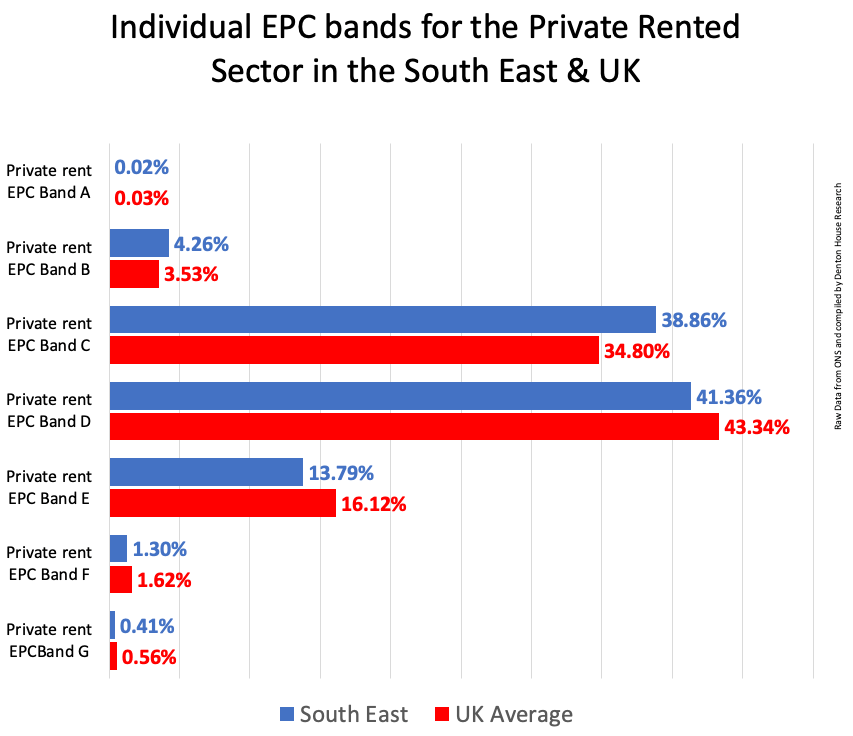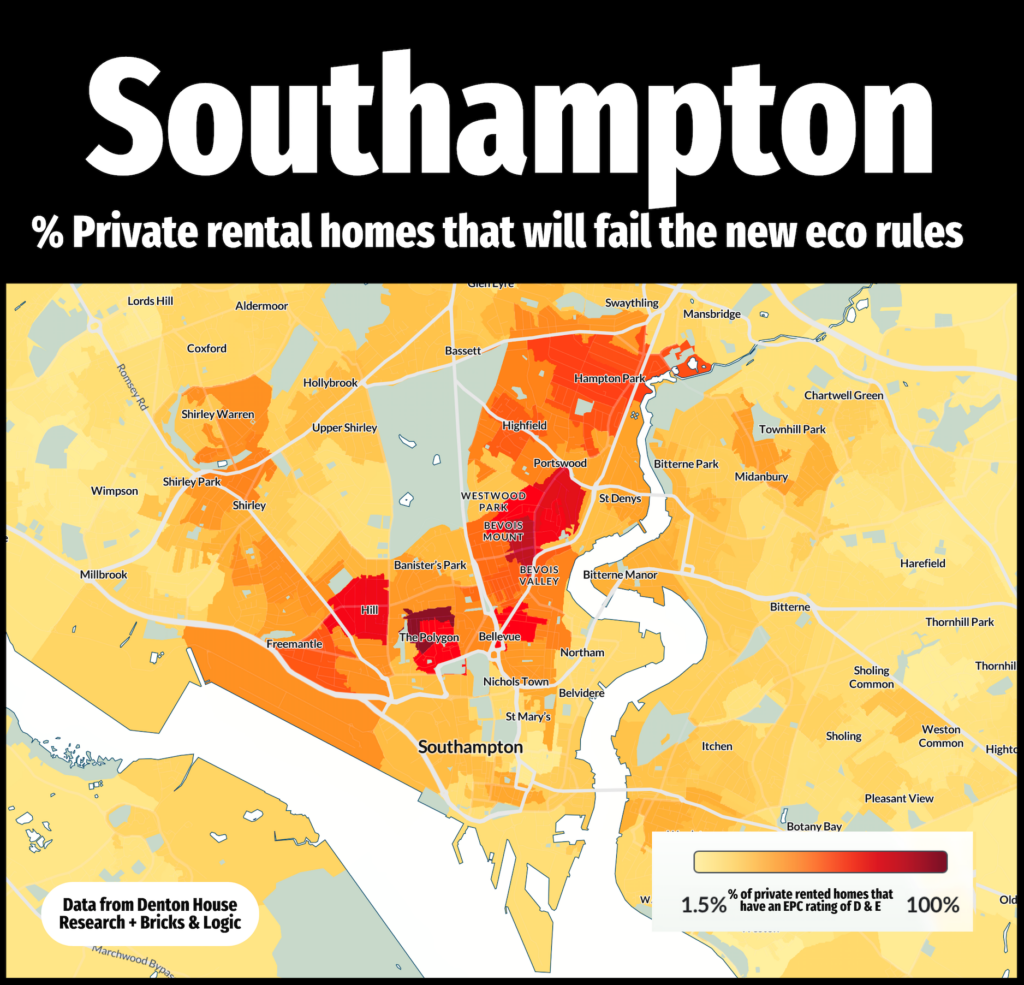The rental property market is on the brink of a significant shift, one that will undoubtedly cause concern among landlords across the UK.
The new Labour government has made clear its intention to raise the minimum energy performance standards for rental properties. This move could have far-reaching implications for both landlords and tenants alike. The proposed change, which would see the minimum Energy Performance Certificate (EPC) rating for rental properties increase from E to C by 2030, has sparked a mix of anxiety and uncertainty within the property sector.
The new regulations are part of Labour’s broader commitment to combat climate change and enhance energy efficiency across the nation’s housing stock. Yet this step isn’t the first foray by a government into improving the energy efficiency of the U.K.’s private rental homes.
The Tory government first introduced EPC regulations for private rental properties in 2018. It was part of a broader effort to improve the energy efficiency of the UK’s housing stock. Under these regulations, landlords were required to ensure that their properties met a minimum EPC rating of E before they could be legally rented out. To support this, certain exemptions were allowed. Also, a cost cap was introduced, limiting the amount landlords were required to spend on energy efficiency improvements to £3,500 per property.
This cap was intended to prevent undue financial strain on landlords. Particularly those with older or lower-value properties, while still encouraging necessary upgrades. The £3,500 cap covered a range of potential improvements, including insulation, heating system upgrades, and draught-proofing. It was seen as a balanced approach that allowed landlords to comply with the new standards without facing prohibitive costs.
The Scale of the Challenge for Southampton Landlords
While the intentions of the Labour government are commendable, the practicalities for landlords are anything but straightforward. Upgrading a property’s energy efficiency from an E rating to a C rating is not merely a matter of a few minor tweaks like it was from taking a property from a G to an E rating. It often requires substantial investment. The reality of bringing a property up to a C rating could be vastly more expensive. Some projections place the cost as high as £30,000 per property for older properties.
These figures are not just arbitrary; they reflect the significant work required to meet the new standards. From installing new insulation, upgrading heating systems, replacing windows, to potentially more extensive renovations depending on the property’s age and construction, the financial burden is considerable. For many Southampton landlords, particularly those with older properties or properties where the value of rental homes are lower, the costs may seem prohibitive.
The Impact on the Southampton Rental Market
The implications of these changes are likely to be profound. Some Southampton landlords may decide that the cost of upgrading is simply too high. They might choose to sell their Southampton properties instead. This exodus from the rental market could exacerbate the current housing shortage for tenants. It could drive up rents and making it even more difficult for those tenants to find affordable rental homes. Although, paradoxically, making buy-to-let more profitable for those that remain.
There is also the risk that the increased financial burden on landlords will be passed onto tenants in the form of higher rents. While the goal of improving energy efficiency is to reduce overall living costs for tenants by lowering their energy bills, this benefit could be offset if landlords raise rents to recoup their investment. This could particularly impact properties where rental incomes are lower, and the cost of upgrades represents a significant proportion of the property’s value.
Does Age, Tenure and Type of Home Make a Difference on the EPC Rating?
The EPC scores associated with each energy efficiency band are:
- Band A – 92 plus (most efficient)
- Band B – 81 to 91
- Band C – 69 to 80
- Band D – 55 to 68
- Band E – 39 to 54
- Band F – 21 to 38
- Band G – 1 to 20 (least efficient)
Looking at only the property type, it certainly affects energy efficiency.
Overall, “flats and maisonettes” are the most energy-efficient property type in the UK. They have a median energy efficiency score of 73, which is equivalent to band C. Detached and terraced dwellings came in second at 66 while in last place was semi-detached (65).
Detached homes tend to be more modern, so should have a higher energy rating. There are three external walls exposed in semi-detached houses, which would make you think it would have better EPC ratings than a detached. However, the average age of UK semi-detached homes is older than the average age of UK detached homes. Finally, the terraced home normally only has two external walls, so should be better than semis and detached homes. Yet, terraced homes have solid walls, which make them perform not as well as cavity walls. Finally, flats and maisonettes, which are more likely to be more modern and grouped in blocks, making them more efficient.
Energy Efficiency Across the Different Property Types and Their Tenure
Breaking down each type into its three tenures of owner occupiers, private renting and social renting…
Detached properties exhibit relatively similar energy efficiency ratings across all tenures. Owner-occupied homes scoring an average of 64. It is slightly higher than the private rented sector at 62, with social rented properties at 66. This suggests that while there is a marginal variation, social rented detached homes tend to be more energy efficient on average.
Semi-detached homes show uniformity in energy efficiency for owner-occupied and private rented properties, both with an average rating of 63. Social rented semi-detached homes, however, are somewhat more efficient, with an average rating of 68. This may reflect better insulation or energy-saving measures in the social housing sector.
Terraced properties reveal a small increase in energy efficiency as we move from owner-occupied (63) to private rented (64) and then to social rented (69). This trend indicates that terraced homes in the social rented sector might benefit from recent energy efficiency upgrades or more rigorous building standards.
Finally, flats and maisonettes demonstrate the highest energy efficiency ratings across all property types. Owner-occupied and social rented homes both scoring 72, and private rented properties closely following at 70. The higher ratings in this category could be due to the structural benefits of multi-unit buildings, such as shared walls that reduce heat loss.
In summary, while there are differences in energy efficiency across different property types and tenures, social rented properties generally exhibit higher energy efficiency ratings. Particularly in the semi-detached and terraced categories. This may reflect concerted efforts within the social housing sector to improve energy efficiency, possibly driven by policy initiatives and funding targeted at reducing fuel poverty.
Energy Efficiency by Property Age
Finally, we just wanted to look at the age of the property and see if there is any difference.
The age of a home is also a key determinant of its energy efficiency. Largely due to advancements in construction techniques and regulations over time. Properties built from 2012 onwards tend to have the highest energy efficiency, with a median score of 84, aligning with EPC band B. Homes constructed between 1983 and 2011 also perform relatively well, with a median score of 72.
Older properties, particularly those built between 1930 and 1982, have a lower median energy efficiency score of 65. The least energy-efficient homes are those built before 1930. They have a median score of 59, placing them in band E.
The concentration of older properties in an area can significantly impact its overall energy efficiency ratings. There are areas of Southampton containing a higher proportion of pre-1930 homes typically showing lower median scores.
The Regional and Local Southampton Picture
38.36% of UK private rented homes are in the proposed minimum EPC standards of A to C (compared to 43.14% in the South East).
Nationally, 59.46% of private rented homes are in the D & E EPC ratings at the moment, (compared to 55.15% in the South East).

There are 30,062 private rented properties in Southampton, of which 16,579 properties are in EPC Bands D and E.
To visualise that better, I have created this heat map to show the extent of the issue for Southampton landlords.

Southampton Landlords Navigating the Uncertainty
In the face of these challenges, it is crucial for Southampton landlords to adopt a pragmatic approach. While the initial reaction may be one of concern, it is important to consider the long-term benefits of making these energy efficiency improvements. Properties with higher EPC ratings are more attractive to tenants. These are increasingly looking for homes with lower running costs. Also, these properties tend to have higher market values. By investing in upgrades now, landlords can not only comply with future regulations but also enhance the value of their investments.
Moreover, there may be opportunities to mitigate the costs. The government has yet to finalise the details of the new regulations. There is hope that they will introduce measures to support landlords through this transition. For example, there has been discussion around increasing the cap on allowable expenditure for energy efficiency improvements, potentially up to £10,000. Additionally, there may be grants, loans, or tax incentives available to help offset some of the costs.
Southampton landlords should also consider the timing of their investments.
While the 2030 deadline may seem distant, the scale of the work required means that starting early could be beneficial. Properties that are upgraded sooner rather than later will be in a better position to attract and retain tenants. Particularly as energy efficiency becomes an increasingly important consideration for renters. Furthermore, by acting now, landlords can avoid the rush and potential price increases that are likely to occur as the deadline approaches.
It is also worth considering the broader societal benefits of these changes. Improving the energy efficiency of rental properties is not just about meeting government regulations; it is about contributing to the fight against climate change and helping to reduce the country’s overall carbon footprint. This is something that both Southampton landlords and tenants can take pride in, and it aligns with the growing demand for more sustainable living options.
Moreover, the improvements made to properties will not only benefit current Southampton tenants but also increase the long-term viability of the rental market. As properties become more energy-efficient, they will be better equipped to withstand future changes in energy prices and regulations. This future-proofs investments and ensures that landlords can continue to offer quality housing in a competitive market.
Final Thoughts: A Strategic Approach for Southampton Landlords
In conclusion, while the proposed changes to EPC requirements may initially seem daunting, they should be viewed as an opportunity rather than a threat. By taking a proactive and strategic approach, Southampton landlords can not only meet the new standards but also enhance the value and appeal of their properties. This will not only benefit their own portfolios but also contribute to a more sustainable and resilient local rental market.
The key is to start planning now, seek out advice from agents like ourselves or many of the other agents in Southampton, and consider the long-term benefits of these changes. The road ahead may be challenging, but with careful planning and a commitment to improving the quality of rental housing, Southampton landlords can navigate this transition successfully.
As leaders in the property market, feel free to contact us to discuss what has been said in the article as it is everyone’s responsibility to not only meet these new standards but to embrace the positive changes they bring.
Stats from ONS, Portals & Denton House Research








